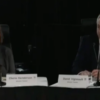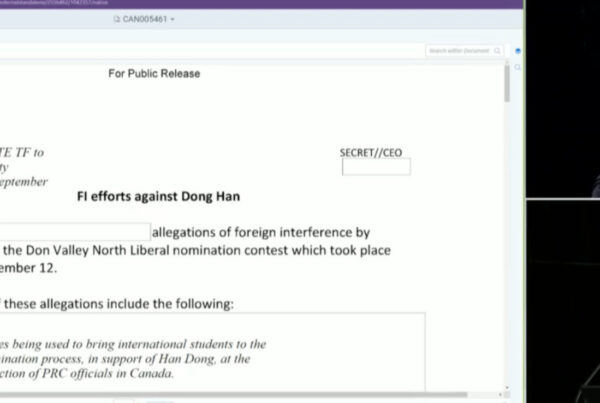Imagine that over the past thirty years, your community had a two-thirds reduction in police officers and police cars; or that there were now only about a third of the medical professionals and hospital beds that you had access to in 1973. How about having only one in three of the budgeted firemen remaining, and all the Fire Department’s trucks have been swapped for family sized cars?
Now imagine what the last 30 years have done to the Canadian Army…
Delegates to the 2003 conference of the Artillery Association of Canada (one of the several associations of serving and retired officers that comprise Canada’s Conference of Defence Associations) received a rather startling brief about the latest reorganization of Canada’s four artillery regiments. The Canadian Army’s crisis in manpower, equipment and resources is becoming acute, and there is a way to measure it.
Over the last 30 years, the Regular component of Canada’s Army has consisted of 10 (then nine with the unwarranted and undeserved disbandment of the Canadian Airborne Regiment) battalions of infantry, four regiments of armor and four of artillery. There are also the Field Engineers, Service Battalions and other components of the Regular Army — though their absence in the following paragraphs is not intended as a slight to them. The woes of the Reserve component of the Army, while also considerable and equally undeserved, are worthy of another article on another day.
Since 1973, while the number of our regular battalions and regiments has scarcely diminished, what has happened to them has been remarkable indeed.
In the Western tradition, infantry form the heart of an army. On the battlefield, they are the only component that can be expected to both take and to hold ground from the enemy, and nothing can really be thought secure until infantrymen have gone through it, poking into the nooks and crannies, and dealing appropriately with whatever they find. Only infantry are adaptable enough to operate without the support of other arms. An army needs infantry who are hardy, self-reliant, confident, and plentiful – infantry take the bulk of casualties in almost all circumstances.
In 1973, leaving aside the unusual organization of the Canadian Airborne Regiment, our infantry were organized thusly:
- A headquarters element of signalers, clerks, provosts, drivers, medics and the command elements;
- A combat support company with an anti-tank platoon (then of eight S-11 missiles, although the 107mm recoilless rifle was much preferred), a mortar platoon with eight 81mm mortars, a platoon of sappers – infantrymen come engineers — and a reconnaissance platoon with the battalion’s scouts and snipers;
- Four rifle companies, each comprised of three platoons of 30-40 men, a company HQ, and an extra weapons detachment to round out the organic firepower of the company.
This organization had been tried and tested in combat, on peacekeeping missions and in a variety of other circumstances. It was resilient, endurable and effective. In 1973, these battalions were mechanized and mounted in the M-113 – a tracked armoured personnel carrier.
Thirty years of fiduciary starvation later, the new organization of our infantry battalions is thus:
- A headquarters element that generally comprises the same elements of 30 years ago, and is generally of the same size.
- The combat support company now only consists of the reconnaissance platoon and the anti-tank platoon (with eight TOW wire-guided missiles). The sappers and mortars are now gone.
- Most of our battalions now sport two companies of two platoons each.
Theoretically, the strength of our infantry battalions is larger than a mere four platoons where they once had 12. When they are to be deployed overseas, a full nine platoons are created by combing out Regulars and Reservists from elsewhere in the Armed Forces – which explains why so many soldiers do so many back-to-back tours away from home.
Veteran infantry from sundry conflicts will decry the loss of the sappers and especially more so of the mortars – often the Battalion commander’s most critical support weapon. However, the mortars have turned up elsewhere.
Artillery is the most critical firepower component of an Army. It causes most of the enemy casualties in combat, and is exceptionally versatile by suppressing enemy defences in the advance, quelling his formations when they move into the open, and otherwise threatening all of his activities. Modern guns can lay anti-tank minefields, deluge hostile infantry in a cascade of bomblets, crumple bunkers, and – when necessary – demolish houses from afar. Needless to say, the key question for a unit of artillery is how much weight of high explosive and hot steel can you throw, how far, how accurately and how quickly.
Canada has been exceptionally well served by her gunners in both World Wars, and gunners (like the troopers from Armored Regiments and sappers from the Field Engineer Regiments) have also served as peacekeepers without their artillery pieces on many occasions.
In 1973, each of Canada’s artillery regiments could brandish three batteries of eight 155mm M109 self-propelled howitzers. At that time, if necessary, a Regiment’s 24 guns could drop a combined total 2.09 tons of shells per minute on somebody out to 18km away (and rocket assisted shells could let them reach a bit further still). This certainly added defence in depth, and like their mighty sires in Normandy and Flanders, Canada’s gunners could keep this up all day.
The 155mm gun has become the standard artillery piece of the World’s Armies over the past decades, and has undergone considerable improvement (thanks in no small part to a Canadian physicist, the late Dr. Bull). Rates of fire in the latest version of the M109 have improved and the gun can reach out to 30km – but not for Canada’s gunners. Their M109s have been mothballed in the latest reorganization.
The organization of our artillery regiments now consists of what might well be the most pathetic order of battle since the 1890s. We now have one battery of six truck-towed 105mm guns (two of which must be manned by Reservists), a battery of eight 81mm mortars mounted in light armored vehicles, and a battery of eight more 81mm mortars in trucks. Assuming the Reservists are present, the Regiment can fire about 0.54 tons of explosive a minute out to 13km (this is the 105mm battery), and about 0.95 tons a minute within six km once the former infantry mortars weigh in.
Mortars are, of course, highly specialized weapons – deadly and impressive under the right circumstances and of little impact otherwise. They are an infantry weapon for good reason and should remain there. In the artillery world, a truck-towed 105mm howitzer was good enough for the Second World War, but there have been some changes in the World over the past 60 years…
Our skeletal infantry battalions and impotent artillery are complimented by our Armoured Regiments. Armour is the heir to the ancient role of cavalry, in that it serves two functions: Scouting troops (like hussars) that gather information on the battlefield and undertake reconnaissance, and ‘shock action’ troops that break enemy formations through the speed and violence – a role that once belonged to mailed knights and dragoons, but which is currently the province of tanks. In either event, armored regiments were the main guarantor of battlefield mobility for a Canadian Brigade Group.
In 1973, our fleet of Centurion tanks was reaching the end of its service, but each of regiments had three squadrons of 19 of these tanks, and a reconnaissance squadron of 21 light armoured vehicles (with an additional 5-6 which carried the latter’s versatile support troop of sapper/scouts). Including command vehicles, there would be about 90 armoured fighting vehicles present in a mix that let the unit cover both traditional functions.
Now, of course, all the tanks are retired (saving a single squadron in the Armoured School in Gagetown), and our Regiments can muster only lightly protected wheeled vehicles. Each has one squadron of 12 of the much-vaunted Coyote surveillance platforms and one of 15 LAVs reconnaissance vehicles. The recent purchase of some 60 Stryker wheeled gun platforms will restore some capability (and probably will add eight such vehicles to each regiment), but it is still a lightly armoured vehicle and still lacks the ability to provide shock action.
Imagine that your city had nine police stations thirty years ago, each of which could place 12 squad cars on patrol, and now only have four such cars apiece. Imagine that the fire department traded in all of its big fire engines for cars and minivans (some of which had been swiped from the police department). Imagine that only a third of your hospital bed spaces are still open and half of their specialists had been sent into retirement.
For thirty years, you have neglected to pay close attention to your emergency services, taken them for granted, and believed the assurances from City Hall that all was well and any shortfalls could be easily made good… Now, suppose that a real emergency occurred; just how safe do you think you are now?








